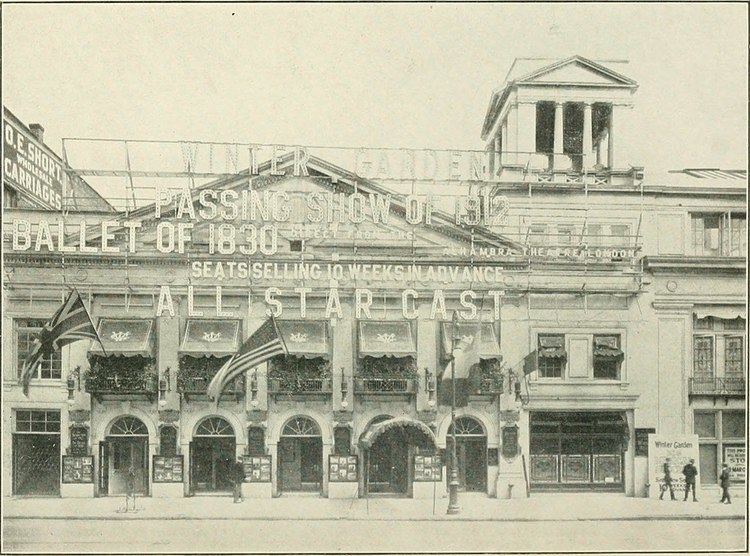Owner Shubert Organization Production School of Rock Rebuilt 1922 Phone +1 212-239-6200 | Type Broadway Opened March 10, 1911 Capacity 1,526 | |
 | ||
Architect William Albert Swasey
Herbert J. Krapp (rebuild) Address 1634 Broadway, New York, NY 10019, USA Similar Broadhurst Theatre, Majestic Theatre, Minskoff Theatre, Shubert Theatre, Gershwin Theatre | ||
The winter garden theatre
The Winter Garden Theatre is a Broadway theatre located at 1634 Broadway between 50th and 51st Streets in midtown Manhattan.
Contents
School of rock 2015 12 winter garden theatre broadway
History
The structure was built by William Kissam Vanderbilt in 1896 to be the American Horse Exchange.
In 1911 the Shuberts leased the building and architect William Albert Swasey redesigned the building as a theatre. The fourth New York City venue to be christened the Winter Garden, it opened on March 10, 1911, with the early Jerome Kern musical La Belle Paree. The show starred Al Jolson and launched him on his highly successful singing and acting career. He played the Winter Garden many times after that.
The Winter Garden was completely remodeled in 1922 by Herbert J. Krapp. The large stage is wider than those in most Broadway houses, and the proscenium arch is relatively low. The building is situated unusually on its lot, with the main entrance and marquee, located on Broadway, connected to the 1526-seat Seventh Avenue auditorium via a long hallway, and the rear wall of the stage abutting 50th Street. When Al Jolson performed there, the Winter Garden had a runway built, going out into the audience, and Jolson would run out and slide on his knees while singing, and the audience, not used to such dynamic and close-up showmanship from a performer, would go wild.
The theatre's longest tenant was Cats, which opened on October 7, 1982 and ran 7,485 performances spanning nearly eighteen years. The auditorium was gutted to accommodate the show's junkyard setting, and, after the show's closing, architect Francesca Russo supervised its restoration, returning it to its 1920s appearance.
In its early days, the theatre frequently hosted series of revues presented under the umbrella titles The Passing Show, Artists and Models, and The Greenwich Village Follies. Following the 1932 death of Florenz Ziegfeld, the Shuberts acquired the rights to the name and format of his famed Ziegfeld Follies, and they presented the 1934 and 1936 editions of the Follies featuring performers such as Fanny Brice, Bob Hope, Josephine Baker, Gypsy Rose Lee, Eve Arden, The Nicholas Brothers, and Buddy Ebsen. It served as a Warner Bros. movie house from 1928 to 1933 and a United Artists cinema in 1945, but aside from these interruptions has operated as a legitimate theatre since it opened. Due to the size of its auditorium, stage, and backstage facilities, it is a house favored for large musical productions.
In 1974 Liza Minnelli appeared at the Winter Garden in a concert run that would win her a Tony Award for that year, honoring her successful sold-out run. A live album of the concert was released that year, and remastered and reissued in 2012.
In 2002, under an agreement between the Shubert Organization, which owns the theatre, and General Motors, it was renamed the Cadillac Winter Garden Theatre. At the beginning of 2007, the corporation's sponsorship ended and the venue returned to its original name.
